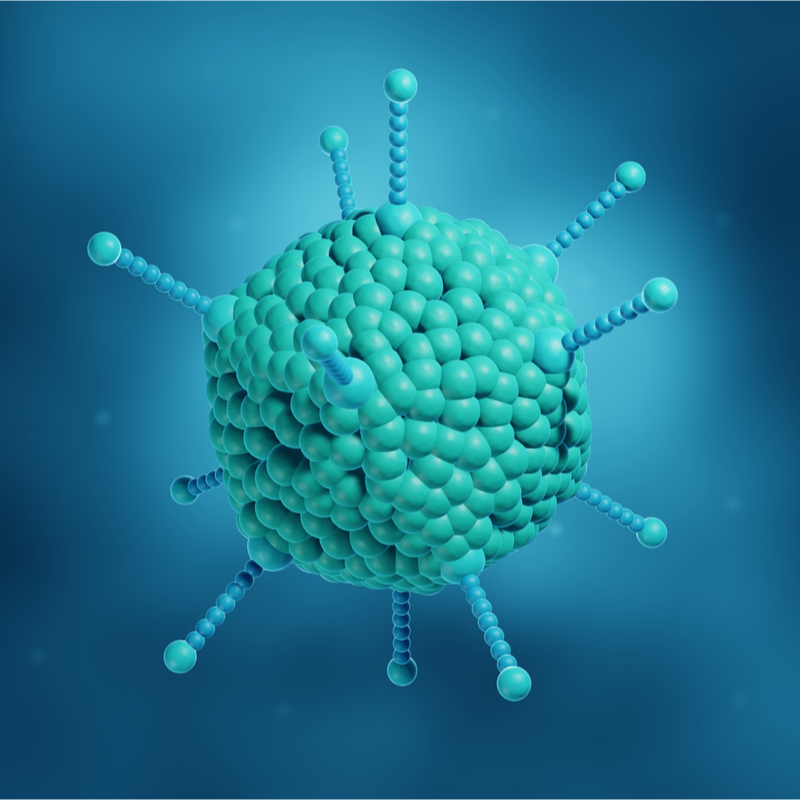
What is the adenovirus?
The adenovirus belongs to a group of pathogens which can trigger a variety of different diseases . These include diseases of the conjunctiva, the gastrointestinal tract, the respiratory tract and the cornea. The adenoviruses are extremely resistant and highly contagious. All age groups are equally at risk of contracting adenovirus.
How common is adenovirus?
The adenoviruses are spread all over the world and do not reveal any significant seasonal accumulation of infections. Adenovirus outbreaks are particularly frequent in community settings such as day-care centres or schools, if not small epidemics. Since in many cases the diagnosis is only made clinically, the number of unreported cases is probably much higher than the actual laboratory diagnostic evidence that is recorded via the reporting channel. However, the reporting obligation of the Infection Protection Act is limited to the detection from conjunctival swabs of the eyes. Epidemic keratoconjunctivitis is recorded on the basis of these . In 2001, was made compulsory in Germany, and since then annual reports have ranged from just 82 to over 650 cases per year. In recent years, there has been a clear decline in the number of infections.
When does the disease break out and how long is one contagious?
In general, the incubation period is between 5 and 12 days. However, infection already begins with the first symptoms and the risk of transmission. This risk remains for at least 2 weeks.
How is the adenovirus transmitted?
The adenoviruses are mostly circulated and spread from person to person, via the hands to which the viruses adhere. For example, the viruses are transmitted when a person with the disease touches his or her inflamed eye and then shakes hands with another person. If the still healthy person then touches the hand in the eye, to which the viruses adhere, it leads to an infection with the adenovirus.
The adenovirus can also be transmitted via contaminated objects, for example, if a sick person touches their infected eye and then touches objects, door handles, handrails or similar. Other, still healthy people, then become infected with the virus by touching the contaminated surface. Likewise, the adenoviruses circulate with the help of shared towels and flannels. The same applies to objects that come into contact with the eye, such as cameras or tonometers, measuring instruments used in ophthalmology. Sometimes the viruses adhere to the surfaces for several weeks at room temperature and remain infectious there.
What are the symptoms of adenovirus?
In people with a healthy immune system, the infection with adenoviruses usually runs its course without symptoms. If symptoms do occur , there is a wide range of medications available that enable to provide the patient with a relatively mild course of the disease . Most adenovirus infections occur in children and have fever, pharyngitis, tonsillitis and cervical adenopathy as symptoms. The most common condition is conjunctivitis. The more rare syndromes caused by adenoviruses include pneumonia and bronchiolitis.
How is adenovirus diagnosed?
The first thing to do is a clinical examination. If there is a severe disease, a PCR test of blood and respiratory secretions is performed as a detection. Only in rare cases does the diagnosis from the laboratory have an effect on the treatment of the adenovirus infection. During an acute infection, the virus can be isolated from eye secretions, respiratory secretions, urine and stool. Here, a fourfold increase in the titre is an indication of an acute infection .
How is adenovirus treated?
Therapy is usually symptomatic. Although the drugs ribavirin and cidofovir have achieved different results in immunocompromised patients, the antiviral agents have not been shown to be effective.
What needs to be considered in adenovirus infection?
- Only the symptoms and not the cause itself can be treated.
- To prevent passing on the pathogens via the hands, avoid touching the infected eye with your hands.
- If you have touched your infected eye, it is important to wash your hands immediately and thoroughly.
- If you are suffering from adenovirus, you should stay at home as much as possible to avoid spreading the virus.
- Hygiene items such as creams, powders, flannels and towels should only be used by one person.
- Visiting or working in a community facility such as kindergartens or schools should only be done again when the infection has completely subsided.
- Before visiting a doctor's office, the staff should always be informed that one is infected with the adenovirus. This will enable the staff to take certain hygiene measures.
- Public saunas and bathing establishments should be avoided during the illness.
How can you protect yourself from adenovirus?
- The most important thing is to wash your hands regularly with soap and water.
- Close contact with sick people should be avoided if possible.
- The surfaces in the vicinity of an infected person should always be washed with gloves, regularly with disposable towels, and these should then be disposed of in the household waste .
- If it has been recommended by the doctor or the health department, it may be necessary to use disinfectants.
- You should always use only your own cosmetic products such as make-up sticks, powders or creams.
- Dropper bottles and eye ointments should only be used by one person.
